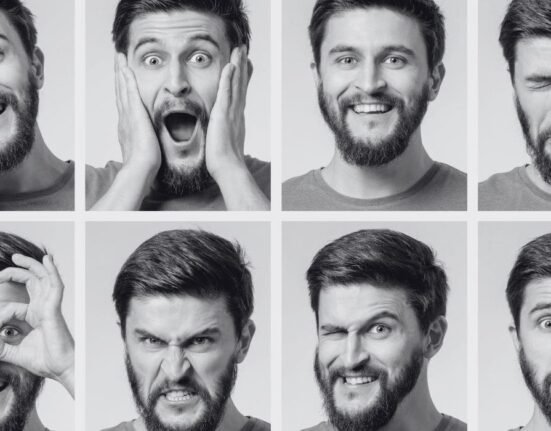A part of being human is having a disability. Nearly everyone will at some time in their lives encounter a temporary or permanent impairment. Approximately 16% of the world’s population, or 1.3 billion individuals, are thought to be significantly disabled at this time. The aging of the population and the rise in the incidence of noncommunicable illnesses are two factors contributing to this statistic. Interactions between people who have a health condition, such as cerebral palsy, can lead to disability. Negative attitudes, inaccessible public transit and structures, and a lack of social support are some of the environmental and human variables that contribute to depression and Down syndrome. The kind and degree of a person’s disabilities are greatly influenced by their surroundings.
Situations that are not accessible to people with disabilities put up obstacles that frequently prevent them from fully and equally participating in society. Removing these obstacles and helping people with impairments live more easily in daily life can help improve social engagement.
Also Read: Beyond Limitations: Valuable Insights From Learning Disabilities
What is disability?
Any physical or mental ailment (impairment) that makes it harder for the affected individual to engage in particular activities (activity limitation) or engage with their environment (participation limits) is considered a disability.
There are many different kinds of impairments, including ones that impact an individual’s:
- Vision
- Movement
- Thinking
- Remembering
- Learning
- Communicating
- Hearing
- Mental health
- Social relationships
Even while the term “people with disabilities” is occasionally used to describe a specific demographic, it refers to a broad category of individuals with a variety of requirements. The effects on two persons with the same kind of impairment might differ greatly. Certain infirmities could be difficult to see or concealed.
Also Read: Facilitating the Needs of Persons With Disabilities
The World Health Organization defines disability in three ways:
- Impairment: A problem with a person’s physical makeup, ability to operate their mind, or both; limb loss, eyesight loss, or memory loss are a few instances of impairments.
- Activity restriction: such as trouble walking, hearing, seeing, or solving problems.
- Restrictions: On taking part in routine everyday activities, such going to work, going out socially and recreationally, and getting preventative care and health care.
Disability can be:
Associated with disorders that exist from birth and can impact several aspects of life, such as cognition (remembering, learning, and comprehending), mobility (navigating the surroundings), vision, hearing, behavior, and other domains. These circumstances might include
- Single-gene disorders (Duchenne muscular dystrophy, for instance)
- Chromosome disorders (such as Down syndrome)
- The outcome of the mother’s prenatal exposure to drugs, such alcohol or cigarettes, or diseases, like rubella.
Connected to developmental disorders that manifest in childhood (such as attention-deficit/hyperactivity disorder, or ADHD, and autism spectrum disorder)
- Related to an injury (for example, traumatic brain damage or spinal cord injuryexternal symbol)
- Linked to a chronic illness (like diabetes), which may result in disabilities like blindness, nerve damage, or loss of limbs.
- Static (like limb loss), progressive (like muscular dystrophy), or intermittent (like some types of multiple sclerosisexternal icon).
Some examples of disabilities are
- Blindness: A state in which an individual has any one of the following ailments:
- Complete lack of vision or
- Visual acuity in the better eye with corrective lenses not to exceed 6/60 or 20/200 (Snellen)
- The field of vision is restricted to an angle of 20 degrees or less.
A person with low vision:
A person whose vision is impaired even after receiving conventional refractive correction or therapy, but who is nevertheless able to use their eyes to plan and carry out tasks with the help of an appropriate assistive technology.
Also Read: Attention-Seeking Behaviour in Adults
Cerebral Palsy
A collection of non-progressive disorders marked by aberrant motor control posture brought on by brain damage or injury sustained during the perinatal, neonatal, or newborn stages of development.
Hearing impairment: A loss in the better ear of sixty dB or more in the range of frequencies used for conversation.
Leprosy-cured person:
People who have been cured of leprosy, but still experience the following symptoms: extreme physical deformity, advanced age that makes it impossible for them to work in a gainful occupation, manifest deformity, and paresis, but they still have sufficient mobility in their hands and feet to engage in normal economic activity.
Locomotor disability:
Impairment of the muscles, joints, or bones that results in a common kind of cerebral palsy or a significant limitation of limb mobility. Poliomyelitis, cerebral palsy, amputation, injuries to the spine, brain, soft tissues, fractures, muscular dystrophies, etc. are some frequent disorders that can result in locomotor impairment.
- Mental illness: Any mental disorder other than mental retardation
- Mental retardation: a state in which a person’s mental development is halted or incomplete and is particularly marked by sub-normal intellect, or the ability to think, speak, move, and interact with others.
- Autism: A disorder characterized by irregular skill development that mostly impacts an individual’s social and communication skills and is characterized by ritualistic and repeated behavior.
Multiple Disability:
The Person with disabilities (Equal Opportunities, Protection of Rights and Full Participation) Act, 1995 defines a combination of two or more disabilities as blindness or low vision (clause (i) of section 2. Hearing and Speech Impairments Leprosy cures and other locomotor disabilities, Mental disease and mental retardation.
Also Read: The Importance of Inclusive Education for Students
Learning Disabilities (Dyslexia) Affect a person’s capacity to learn, comprehend, and/or apply spoken, read, written, or nonverbal information (memory, reasoning, problem-solving, organization/planning, functional literacy skills, and perceptual skills), or, to put it another way, impede language use in a variety of contexts (not just reading).
- Dyspraxia – The incapacity to coordinate movement and produce a suitable physical reaction.
- Dysgraphia – Challenges in writing, pertaining to both technical and emotive aspects. Spelling problems might also exist.
- Dyscalculia – Completing computations is difficult.
- Attention Deficit and Hyperactivity Disorder(ADHD) – Hyperactivity, distractibility and impulsivity
Impairment
The bodily part that is missing or damaged, a limb that has been amputated, paralysis following polio, diabetes, nearsightedness, mental retardation, reduced hearing ability, facial deformity, or any other anomalous condition.
Disabilities
A person with an impairment may have trouble walking, seeing, speaking, hearing, reading, writing, counting, lifting, or showing interest in and contributing to their environment.
- Temporary Total Disability: The time frame during which the afflicted individual cannot work at all. He could have orthopedic, opthalmological, auditory, speech, or any other medical care at this time.
- Temporary partial Disability: The time after recuperation has advanced to the point that the individual can start working for pay.
- Permanent Disability: Once the ailment reaches a state of maximal improvement following medical therapy, there may be permanent damage or loss of use to some part(s) of the body, resulting in a stagnant state.
What is impairment?
If a person’s physical or mental abilities are absent or significantly affected, society deems them disabled. For example, problems with brain anatomy can lead to problems with mental functioning, just as problems with the anatomy of the eyes or ears can result in problems with vision or hearing.
- Structural impairments are severe problems that involve a body part, either internal or external. Examples of these include the complete loss of a body part, as occurs following amputation of a limb, or a type of nerve damage that may result in multiple sclerosis.
- Functional impairments involving the whole or partial loss of a physical component’s functionality. Stiff joints and loose joints are persistent symptoms.
What distinguishes participation restriction from activity limitation?
The International Classification of Functioning, Disability, and Health (ICF) was released in 2001 by the World Health Organization (WHO).
The ICF provides a consistent language for classifying environmental elements that impact health, such as physical function and structure, exercise, and engagement levels. This description helps assess how people’s functioning, activities, and surroundings either support or interfere with their capacity to participate fully in society.
According to the ICF:
- • Activity is the carrying out of a duty or activity by a single person.
- • Participation is a person’s participation in a circumstance in life.
While activities primarily occur at the individual level and participation requires taking part in responsibilities in life, such as work, school, or relationships, the ICF admits that the line between these two categories is not entirely obvious and blends them. The challenges an individual faces in carrying out activities and interacting with others are the basis for activity constraints and participation restrictions. Environmental variables including technology, connections and support, services, rules, and other people’s attitudes can make things easier or harder for people to participate in activities.
Also Read: The Old Generation and Use of Technology
The ICF includes the following in the categories of participation and activity
- Acquiring and using knowledge
- Handling obligations and duties
- Mobility: (changing and sustaining bodily postures, manipulating and transporting items, exploring the surroundings, and traveling via transit)
- Organizing self-care activities
- Handling the household duties
- Building and overseeing connections and exchanges with others
- Participating in significant life domains such as school, work, money management, or financing
- Taking part in social, civic, and communal life
It is critical to enhance the quality of life in communities by offering accommodations that reduce or remove participation barriers and activity limits for individuals with disabilities, enabling them to engage in daily responsibilities and activities.
Various State Governments have also adopted different sets of definitions for example, the Government of Tamil Nadu declared one – eyed persons in the same category as blind persons and have extended various concessions













Leave feedback about this